Community Embraces New Word Game at Mid-Year Play Day This past Sunday, families at Takoma Park’s Seventh Annual Mid-Year Play Day had the opportunity to experience OtherWordly for the first time. Our educational language game drew curious children and parents to our table throughout the afternoon. Words in Space Several children gathered around our iPads […]
Read more Imploded by the same forces that have disrupted the broader publishing industry, the dictionary business struggles to get a grip on the online/mobile world. “Our research tells us that most people today get their reference information via their computer, tablet, or phone” said Stephen Bullon, Macmillan Education’s Publisher for Dictionaries, “and the message is clear and unambiguous: the future of the dictionary is digital.”
Imploded by the same forces that have disrupted the broader publishing industry, the dictionary business struggles to get a grip on the online/mobile world. “Our research tells us that most people today get their reference information via their computer, tablet, or phone” said Stephen Bullon, Macmillan Education’s Publisher for Dictionaries, “and the message is clear and unambiguous: the future of the dictionary is digital.”
The print dictionary lasted for two and a half centuries, tracing back to 1755, when Samuel Johnson published A Dictionary of the English Language, the first comprehensive, reliable English-language dictionary. Johnson’s dictionary was used by the few wealthy, literate individuals and institutions who owned books, and was the standard for over 150 years. The consumer market for dictionaries expanded with the Industrial Revolution of the mid-19th century, when paper and books became generally affordable. Despite the importance of dictionaries to literacy and communication, there have only been a handful of major dictionaries.
Although a few dictionaries become commonly accepted as standards, there is no grand authority in charge of the English language.
Dictionaries are creative works which describe the ever-changing way a society uses language. Thus, if you start reading dictionaries, you find a cacophony of subtly-different definitions. For example, a “crosswalk” could be:
- a path marked off on a street to indicate where pedestrians should cross (American Heritage)
- a crossing lane marked off for pedestrians (Collins)
- a specially marked place for people to walk across a street (Longman)
- a specially paved or marked path for pedestrians crossinga street or road (Merriam-Webster)
- a marked part of a road where pedestrians have right of way to cross (Oxford)
- a place where pedestrians can cross a street (Wiktionary)
Why the variety of definitions? For one thing, copyright law necessitates that publishers find new ways to say the same thing. But also, language evolves over time, and publishers seek to serve consumers by hiring dictionary editors to invent new approaches to their craft of dictionary writing.
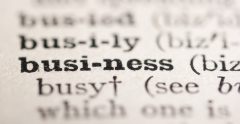 Unfortunately, even for the publishers like Bullon, who get digital, the economics of dictionary publishing is unsustainable. Dictionaries have a simple, obsolete, business model: A huge up-front investment, recouped over years (or decades) of book sales.
Unfortunately, even for the publishers like Bullon, who get digital, the economics of dictionary publishing is unsustainable. Dictionaries have a simple, obsolete, business model: A huge up-front investment, recouped over years (or decades) of book sales.
Depending on the publisher’s budget and marketing priorities, they hire lexicographers to create definitions from scratch, or paraphrase existing dictionaries. The Webster’s Third New International Dictionary took a decade to create. Finally published in September 1961, the team of lexicographers led by Philip Babcock Gove spent 757 editor-years and $3.5 million ($26 million in today’s dollars) to build their unabridged dictionary with 450,000 entries. To create a new, medium-sized dictionary with 35,000 words would cost hundreds of thousands of dollars (for paraphrasing) to tens of millions of dollars (for new definitions based on examining real-world usages).
Sadly for dictionaries, in this digital age, it’s impossible to earn much money from subscriptions and advertising, and unrealistic to earn millions from dictionary-type apps. There’s a stagnation of the older dictionaries — and new approaches brewing which use crowdsourcing and artificial intelligence.
The following is an overview of most major dictionaries currently available, and their online/mobile offerings.
Free dictionaries:
 Wikimedia Foundation — Wiktionary — Wiktionary is a free web site, and a data source for many dictionary web sites and apps. — Started in 2002, Wiktionary has over 3.1 million entries in English. Similar to Wikipedia, it’s a collaborative project that anyone can edit, aiming to describe all words of all languages using definitions and descriptions in English. Many of the entries are either based on the other three free sources below, or paraphrased from existing dictionaries. Many of the entries were automatically generated, adapted from commercial dictionaries. It can be used freely, as long as it is credited.
Wikimedia Foundation — Wiktionary — Wiktionary is a free web site, and a data source for many dictionary web sites and apps. — Started in 2002, Wiktionary has over 3.1 million entries in English. Similar to Wikipedia, it’s a collaborative project that anyone can edit, aiming to describe all words of all languages using definitions and descriptions in English. Many of the entries are either based on the other three free sources below, or paraphrased from existing dictionaries. Many of the entries were automatically generated, adapted from commercial dictionaries. It can be used freely, as long as it is credited. Princeton University — WordNet — WordNet is a data source for many thesaurus-type web sites and apps. — WordNet is a different kind of dictionary. Instead of a dictionary of words (where each word has one or more senses), it is a dictionary of “word senses.” It contains 117 thousand sets of synonyms, each for a specific meaning (e.g. “a sudden brief burst of bright light”). It can be used as a dictionary by listing all the meanings in which a word appears. WordNet also contains semantic relations. It can be used freely, as long as it is credited.
Princeton University — WordNet — WordNet is a data source for many thesaurus-type web sites and apps. — WordNet is a different kind of dictionary. Instead of a dictionary of words (where each word has one or more senses), it is a dictionary of “word senses.” It contains 117 thousand sets of synonyms, each for a specific meaning (e.g. “a sudden brief burst of bright light”). It can be used as a dictionary by listing all the meanings in which a word appears. WordNet also contains semantic relations. It can be used freely, as long as it is credited.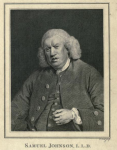 Public domain — A Dictionary of the English Language — Scanned pages available from Internet Archive, with error-prone OCR. — Published in April 1755, and written by Samuel Johnson, ‘A Dictionary of the English Language,’ also known as ‘Johnson’s Dictionary,’ was influential. Prior to the completion of the Oxford English Dictionary, 173 years later, Johnson’s was the pre-eminent English dictionary. Funded in 1746 by a consortium of London’s most successful publishers, including Robert Dodsley and Thomas Longman.
Public domain — A Dictionary of the English Language — Scanned pages available from Internet Archive, with error-prone OCR. — Published in April 1755, and written by Samuel Johnson, ‘A Dictionary of the English Language,’ also known as ‘Johnson’s Dictionary,’ was influential. Prior to the completion of the Oxford English Dictionary, 173 years later, Johnson’s was the pre-eminent English dictionary. Funded in 1746 by a consortium of London’s most successful publishers, including Robert Dodsley and Thomas Longman. Public domain — Century Dictionary and Cyclopedia — Available in full-text form at Wordnik, or Global Language Resources. — The largest, out-of-copyright dictionary. One of the largest encyclopedic dictionaries of the English language. Published from by The Century Company of New York, in multivolume versions, with 7,046 pages. Last updated 1914.
Public domain — Century Dictionary and Cyclopedia — Available in full-text form at Wordnik, or Global Language Resources. — The largest, out-of-copyright dictionary. One of the largest encyclopedic dictionaries of the English language. Published from by The Century Company of New York, in multivolume versions, with 7,046 pages. Last updated 1914.
Provides an API:
Application Programming Interfaces (APIs) allow web sites and apps to access dictionary information in realtime. This is a great way to get information used in a variety of ways, inviting other developers to create innovative web sites and apps that use the dictionary data.
 Cambridge University Press — Cambridge Dictionary of American English, Cambridge Advanced Learner’s Dictionary (British), and others — Provides an API in July 2012. See announcement. Free up to 3,000 calls per month or nonprofit use, higher traffic available for licensing at ~$4 per thousand calls. — Also available for end users free online at dictionary.cambridge.org, and several mobile apps ranging from free to $22 for iOS and Android, and older platforms.
Cambridge University Press — Cambridge Dictionary of American English, Cambridge Advanced Learner’s Dictionary (British), and others — Provides an API in July 2012. See announcement. Free up to 3,000 calls per month or nonprofit use, higher traffic available for licensing at ~$4 per thousand calls. — Also available for end users free online at dictionary.cambridge.org, and several mobile apps ranging from free to $22 for iOS and Android, and older platforms.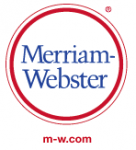 Encyclopædia Britannica — Webster’s Third New International Dictionary, Merriam–Webster’s Collegiate Dictionary — 1913 Edition is freely online by several hosts. An API allows 1000 queries daily, higher traffic or commercial use is negotiated. Latest collegiate dictionary is free online at merriam-webster.com; Third New International (unabridged) is $30/year or $5/month online, or a $60 iOS and Android app. — First published in 1806, Noah Webster, worked an additional two decades, learning 26 languages, to publish “An American Dictionary of the English Language” in 1828, with 70k entries, more than Johnson’s 1755 British masterpiece. After Webster’s death, George and Charles Merriam bought the rights, and published a revisions in the later 19th century and throughout the 20th centuries, expanding to a comprehensive unabridged dictionary of over 500k entries. Collegiate versions were abridged. Note, the term “Webster” is now generic (now rebranded as “Merriam-Webster”).
Encyclopædia Britannica — Webster’s Third New International Dictionary, Merriam–Webster’s Collegiate Dictionary — 1913 Edition is freely online by several hosts. An API allows 1000 queries daily, higher traffic or commercial use is negotiated. Latest collegiate dictionary is free online at merriam-webster.com; Third New International (unabridged) is $30/year or $5/month online, or a $60 iOS and Android app. — First published in 1806, Noah Webster, worked an additional two decades, learning 26 languages, to publish “An American Dictionary of the English Language” in 1828, with 70k entries, more than Johnson’s 1755 British masterpiece. After Webster’s death, George and Charles Merriam bought the rights, and published a revisions in the later 19th century and throughout the 20th centuries, expanding to a comprehensive unabridged dictionary of over 500k entries. Collegiate versions were abridged. Note, the term “Webster” is now generic (now rebranded as “Merriam-Webster”). Oxford University Press — Oxford English Dictionary (OED), Shorter Oxford English Dictionary, Concise Oxford English Dictionary — All access, via their web site, or their API is behind their $295/yr or $30/month paywall; or $250/school for education. Their API is rate limited to 30 queries per minute. No app. — The most comprehensive dictionary, the OED is massive, with 600k words, 22k pages in print. It has a long scholarly history, focusing on literary uses, built on a huge corpus example usages. The shorter version is ~500k entries, and the concise version is abbreviated to 240k entries. First published in 1888 (after 30 years of work), last updated in 1997, with ongoing work. In 2010, they announced the 3rd edition was unlikely to ever be printed, but would be online only.
Oxford University Press — Oxford English Dictionary (OED), Shorter Oxford English Dictionary, Concise Oxford English Dictionary — All access, via their web site, or their API is behind their $295/yr or $30/month paywall; or $250/school for education. Their API is rate limited to 30 queries per minute. No app. — The most comprehensive dictionary, the OED is massive, with 600k words, 22k pages in print. It has a long scholarly history, focusing on literary uses, built on a huge corpus example usages. The shorter version is ~500k entries, and the concise version is abbreviated to 240k entries. First published in 1888 (after 30 years of work), last updated in 1997, with ongoing work. In 2010, they announced the 3rd edition was unlikely to ever be printed, but would be online only. WordNik — Free on the web at wordnik.com. — WordNik has a comprehensive API providing access to their pooled dictionary database. They currently have the best API, and the fastest underlying technology. Their database combines definitions from Wiktionary, WordNet, American Heritage (4th ed), Century Dictionary, and also examples of words in use from their corpus of sample sentences. Free access for most uses, including commercial.
WordNik — Free on the web at wordnik.com. — WordNik has a comprehensive API providing access to their pooled dictionary database. They currently have the best API, and the fastest underlying technology. Their database combines definitions from Wiktionary, WordNet, American Heritage (4th ed), Century Dictionary, and also examples of words in use from their corpus of sample sentences. Free access for most uses, including commercial.
For sale as mobile apps:
 Chambers Harrap — The Chambers Dictionary (TCD) — Free online at chambersharrap.co.uk; $7-10 iOS and Android app. — First published by W. and R. Chambers as Chambers’s English Dictionary in 1872, the 12th edition was published in August 2011. Includes words, phrases and meanings. Popular among British crossword solvers and setters.
Chambers Harrap — The Chambers Dictionary (TCD) — Free online at chambersharrap.co.uk; $7-10 iOS and Android app. — First published by W. and R. Chambers as Chambers’s English Dictionary in 1872, the 12th edition was published in August 2011. Includes words, phrases and meanings. Popular among British crossword solvers and setters. HarperCollins — Collins English Dictionary — Free online at collinsdictionary.com; $30 iOS and Android app. — Indirectly has an API via dictionary.com’s API. — First published in 1979, it was innovative at the tie for extensively using computer databases and typesetting. Available in both American and British English. Current edition is the 11th edition, published 2011.
HarperCollins — Collins English Dictionary — Free online at collinsdictionary.com; $30 iOS and Android app. — Indirectly has an API via dictionary.com’s API. — First published in 1979, it was innovative at the tie for extensively using computer databases and typesetting. Available in both American and British English. Current edition is the 11th edition, published 2011. Houghton Mifflin — The American Heritage Dictionary of the English Language (AHD) — Free online at: ahdictionary.com; also available via other web sites, including Wordnik; $25 iOS app or Android. Pocket editions are cheaper. — First edition in 1969. American Heritage magazine owner James Parton contracted with Houghton. The new dictionary was a reaction to 1961’s Webster’s Third, which Parton considered too permissive. The AHD used corpus linguistics for compiling word-frequencies and other information, and included both prescriptive information (how language should be used) and descriptive information (how it actually is used). The most recent edition, the Fifth Edition, was published in November 2011.
Houghton Mifflin — The American Heritage Dictionary of the English Language (AHD) — Free online at: ahdictionary.com; also available via other web sites, including Wordnik; $25 iOS app or Android. Pocket editions are cheaper. — First edition in 1969. American Heritage magazine owner James Parton contracted with Houghton. The new dictionary was a reaction to 1961’s Webster’s Third, which Parton considered too permissive. The AHD used corpus linguistics for compiling word-frequencies and other information, and included both prescriptive information (how language should be used) and descriptive information (how it actually is used). The most recent edition, the Fifth Edition, was published in November 2011. John Wiley & Sons — Webster’s New World Dictionary — No web access; $16 iOS and Android app. — First published in 1951, revised and sold from publisher to publisher in the later 20th cent. Last updated in 1999 (when owned by Simon and Schuster). The college edition is the official desk dictionary of the Associated Press and The New York Times.
John Wiley & Sons — Webster’s New World Dictionary — No web access; $16 iOS and Android app. — First published in 1951, revised and sold from publisher to publisher in the later 20th cent. Last updated in 1999 (when owned by Simon and Schuster). The college edition is the official desk dictionary of the Associated Press and The New York Times. Macmillan — Macquarie Dictionary — On the web for $40/year; $19-33 iOS and Android app. — Dictionary of Australian English, with considerable attention to New Zealand English. Originally funded by a Brisbane-based publisher and the Linguistics department of Macquarie University in Sydney. Includes encyclopedic content, and many Australian people and places. Originally based on Hamlyn’s Encyclopedic World Dictionary of 1971, which in turn was based on Random House’s American College Dictionary of 1947.
Macmillan — Macquarie Dictionary — On the web for $40/year; $19-33 iOS and Android app. — Dictionary of Australian English, with considerable attention to New Zealand English. Originally funded by a Brisbane-based publisher and the Linguistics department of Macquarie University in Sydney. Includes encyclopedic content, and many Australian people and places. Originally based on Hamlyn’s Encyclopedic World Dictionary of 1971, which in turn was based on Random House’s American College Dictionary of 1947. Oxford University Press — New Oxford American Dictionary, Australian Oxford Dictionary, Oxford Dictionary of English (British), and Canadian Oxford Dictionary — Available for free within all Apple’s Mac OS X and iOS devices, and Amazon Kindle (e.g., to popup the definition of any word). Available online as part of bundled subscriptions for institutions ($250/school/year) via the OxfordReference.com portal. Free online at: oxforddictionaries.com; Available as iOS and Android apps for $20-$55. — First published in 1998, these are the major consumer dictionaries from Oxford, for American, Australian, British, and Canadian English. All four are based on the same word data, adjusted for use in each region. Despite the confusingly similar names, this was a new line of dictionaries, not based on the renowned “Oxford English Dictionary” (OED).
Oxford University Press — New Oxford American Dictionary, Australian Oxford Dictionary, Oxford Dictionary of English (British), and Canadian Oxford Dictionary — Available for free within all Apple’s Mac OS X and iOS devices, and Amazon Kindle (e.g., to popup the definition of any word). Available online as part of bundled subscriptions for institutions ($250/school/year) via the OxfordReference.com portal. Free online at: oxforddictionaries.com; Available as iOS and Android apps for $20-$55. — First published in 1998, these are the major consumer dictionaries from Oxford, for American, Australian, British, and Canadian English. All four are based on the same word data, adjusted for use in each region. Despite the confusingly similar names, this was a new line of dictionaries, not based on the renowned “Oxford English Dictionary” (OED). Pearson Education — Longman Dictionary of Contemporary English — Free online at: ldoceonline.com; $30 iOS app; $32 Android app — First published by Longman in 1978.
Pearson Education — Longman Dictionary of Contemporary English — Free online at: ldoceonline.com; $30 iOS app; $32 Android app — First published by Longman in 1978.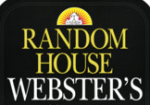 Random House Reference — Random House Webster’s — Not online. $15 iOS app. — First published after World War II, was based on then out-of-print Century Dictionary and the Dictionary of American English. Expanded to be unabridged in 1966. First dictionary to use computers in its compilation and typesetting. Last updated 1993.
Random House Reference — Random House Webster’s — Not online. $15 iOS app. — First published after World War II, was based on then out-of-print Century Dictionary and the Dictionary of American English. Expanded to be unabridged in 1966. First dictionary to use computers in its compilation and typesetting. Last updated 1993.
Not mobile:
 Macmillan — Macmillan English Dictionary — Free online at macmillandictionary.com. No app. — First published in 2002, with work by both British and American lexicographers based on their own corpus of spoken and written texts. In November 2012, announced they would stop publishing a print edition, focused on mobile/online distribution. They have tools for web sites to popup their definitions, and have dabbled in crowdsourcing dictionaries. Starting in 2013, only available online (not in print).
Macmillan — Macmillan English Dictionary — Free online at macmillandictionary.com. No app. — First published in 2002, with work by both British and American lexicographers based on their own corpus of spoken and written texts. In November 2012, announced they would stop publishing a print edition, focused on mobile/online distribution. They have tools for web sites to popup their definitions, and have dabbled in crowdsourcing dictionaries. Starting in 2013, only available online (not in print). Pearson Education (previously Scott Foresman) — The World Book Dictionary — Only available online as part of multi-publication subscription. No app. — Oriented toward children, originally published in 1963. A major reference materials for school children in American schools throughout the 1960s, 1970s and 1980s. Vocabulary largely drawn from the Century Dictionary, the Oxford English Dictionary, along with new analysis of word usage by Clarence Barnhart. Updated several times through 1997, not updated since.
Pearson Education (previously Scott Foresman) — The World Book Dictionary — Only available online as part of multi-publication subscription. No app. — Oriented toward children, originally published in 1963. A major reference materials for school children in American schools throughout the 1960s, 1970s and 1980s. Vocabulary largely drawn from the Century Dictionary, the Oxford English Dictionary, along with new analysis of word usage by Clarence Barnhart. Updated several times through 1997, not updated since.
Credits: The photos of a bulldog on a dictionary, the book with letters flying out, and the word business from an old dictionary are courtesy of ShutterStock.
4 comments on What is a dictionary? And how are they changing?
Comments are closed.


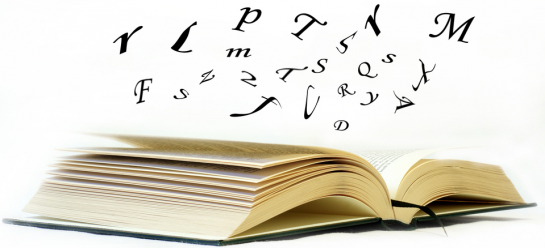
16 Nov 2012, 11:23 am
[…] on http://www.idea.org Share this:Like this:LikeBe the first to like this. This entry was posted in NewsPage and tagged […]
08 Feb 2013, 10:39 am
It will certainly be interesting to see how much the digital book market (ie; kindle & nook) has an affect on the major book companies. I know Barnes & Noble has stated they project closing roughly 200 store within the next 10 years.
07 Mar 2013, 7:13 am
You should also mention FineDictionary.com which is a free resource based on 4 dictionaries: WordNet, Webster's Revised Unabridged Dictionary, Century Dictionary and Cyclopedia and Chambers's Twentieth Century Dictionary.
23 Apr 2013, 12:42 am
You have a nice dictionary site. As you said, it's an amalgamation of sources, it's not an actual new dictionary.